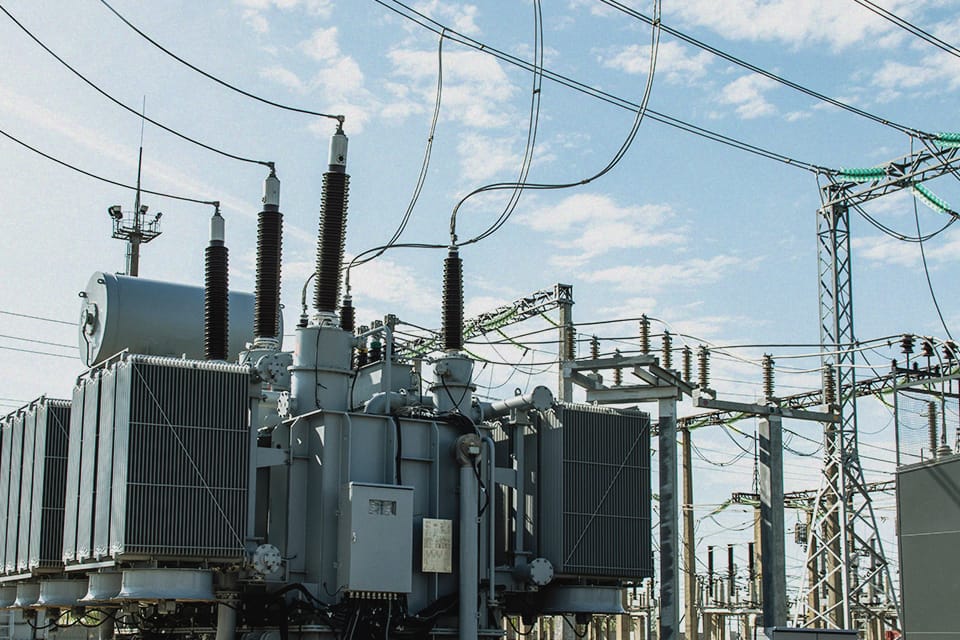
Addressing Physical Infrastructure and Cyber Threats in Utility Projects

In our interconnected society, utility projects rely on robust physical infrastructure to deliver essential services like electricity, water, and gas. These systems are vital for daily living and form the backbone of industries and economies. However, advancing technology has made utility infrastructures more vulnerable to cyber and physical threats, disrupting operations on a wide scale. This article explores these threats, outlines mitigation strategies, and emphasizes the importance of integrated security measures.
Understanding Cyber and Physical Threats
Utility infrastructures are critical systems exposed to sophisticated threats that can disrupt operations and compromise safety. These threats fall into two main categories: cyber threats and physical threats. Addressing both is essential to maintaining secure and reliable services.
Cyber Threats
Cyber threats are malicious activities conducted through digital networks and systems. As utilities increasingly rely on automation and communication technologies, vulnerabilities become pronounced. Key forms of cyber threats include:
- Malware Attacks: Malicious software such as worms, viruses, and Trojans can disrupt operations, steal sensitive data, or corrupt systems. Utilities often face challenges in detecting and removing malware, which can spread quickly and compromise multiple systems simultaneously.
- Phishing: Cybercriminals trick employees into revealing sensitive information, like login credentials, through deceptive emails or fake websites. This practice exploits human error and can bypass even advanced cybersecurity defenses.
- Ransomware: This malware encrypts files, making them inaccessible until a ransom is paid. It can paralyze utility operations and lead to service outages. The recovery process often involves significant financial costs and prolonged downtime.
- Advanced Persistent Threats (APTs): Skilled attackers infiltrate systems to steal data over extended periods, often remaining undetected. These threats are particularly dangerous as they target critical systems and require sophisticated detection strategies.
- Denial of Service (DoS) Attacks: Overwhelming servers with traffic disrupts access to critical systems, affecting operational continuity. DoS attacks can have cascading effects, disrupting customer services and operational workflows.
Physical Threats
Physical threats involve direct attacks on tangible infrastructure, posing risks to safety and service delivery. Examples include:
- Vandalism: Damage to equipment, ranging from graffiti to destruction, disrupts services and incurs costly repairs. Vandalism also creates an unsafe environment for workers and nearby communities.
- Terrorism: Attacks on critical infrastructure, such as bomb threats, cause significant harm and long-term service interruptions. Utilities are often targeted due to their high-value impact on national security and public safety.
- Sabotage: Insiders or disgruntled employees may intentionally damage systems, leading to catastrophic failures. Such actions highlight the importance of monitoring internal activities and maintaining strict access controls.
- Natural Disasters: Hurricanes, floods, wildfires, and earthquakes can devastate physical infrastructure, disrupting services extensively. Preparing for such events requires significant investment in resilient designs and emergency response plans.
- Theft and Burglary: Stolen equipment or resources delay repairs and increase operational costs. The loss of critical tools can hinder timely maintenance and restoration efforts.
Impact of Cyber Threats on Utility Projects
Cyberattacks have far-reaching consequences for utility projects, affecting operations, finances, and public trust.
Operational Disruptions
Cyber incidents can incapacitate critical systems, halting operations and creating safety hazards. For example, ransomware can paralyze command systems, preventing electricity distribution or water treatment. Such disruptions can lead to widespread outages, financial losses, and cascading failures in other infrastructure reliant on power.
Prolonged outages create a ripple effect, impacting businesses, healthcare facilities, and transportation networks. For instance, power disruptions in hospitals can jeopardize patient care, while manufacturing facilities may experience costly delays. The interdependence of utility services amplifies the consequences of cyberattacks.
Data Breaches and Privacy Risks
Hackers often target customer data, including personal and financial information. Exposed data raises privacy concerns and may lead to identity theft. Utilities also face regulatory scrutiny and fines for inadequate data protection, adding to financial burdens.
The increasing reliance on smart grids and Internet of Things (IoT) devices has expanded the attack surface for cybercriminals. These technologies collect vast amounts of data, making utilities attractive targets for data breaches. Protecting this information is essential for maintaining customer trust and meeting regulatory requirements.
Loss of Customer Trust
Breaches and service outages tarnish a utility’s reputation. Customers expect secure systems and reliable services. Failing to meet these expectations erodes trust, making it harder to retain customers or negotiate with regulators.
Rebuilding trust after a breach is a lengthy process. Utilities must demonstrate their commitment to security by implementing robust safeguards and communicating transparently with customers about recovery efforts and preventative measures.
Financial Losses
Recovering from cyberattacks incurs significant costs, including system repairs, incident response, and potential ransom payments. Prolonged downtime results in revenue loss and increased expenses for recovery efforts. In some cases, utilities may also face lawsuits from affected customers or stakeholders.
Investing in cybersecurity upfront can mitigate these financial risks. While the initial costs may seem high, they are significantly lower than the expenses associated with recovering from a major cyber incident.
Legal Ramifications
Utilities must adhere to strict cybersecurity regulations. Non-compliance or successful cyberattacks can lead to fines, sanctions, or lawsuits, compounding financial and reputational damage.
Regulatory bodies like the Federal Energy Regulatory Commission (FERC) and the North American Electric Reliability Corporation (NERC) impose rigorous standards. Meeting these requirements is not only a legal obligation but also a critical component of risk management.
Impact of Physical Threats on Utility Projects
Physical threats disrupt physical infrastructure, compromise safety, and undermine public trust. The impact of physical threats can be broken down into several key areas, highlighting the urgent need for effective risk management and preparedness strategies.
Catastrophic Failures and Damage
Attacks on facilities like power plants or pipelines can cause catastrophic failures requiring extensive repairs. Natural disasters inflict widespread damage, necessitating urgent restoration efforts that strain resources.
For example, hurricanes can topple transmission lines, while earthquakes may damage substations. The recovery process involves significant coordination among utility providers, contractors, and emergency responders.
Safety Risks
Physical threats endanger employees, contractors, and the public. Sabotage or vandalism can create hazardous situations, while natural disasters expose workers to dangerous conditions during restoration.
Ensuring worker safety during emergencies requires comprehensive training and protective equipment. Utilities must also establish protocols for evacuations and hazard assessments.
Service Interruptions
Extended outages affect businesses, healthcare facilities, and communities. For example, power loss halts operations in factories and hospitals, leading to financial losses and public health risks.
Service interruptions also have long-term economic impacts. Businesses reliant on utility services may suffer revenue losses, while communities face disruptions to daily life. Reliable service restoration is critical to minimizing these effects.
Recovery Costs
Restoring damaged physical infrastructure demands significant financial investment. Costs include equipment replacement, additional labor, and higher insurance premiums. Legal claims from affected customers further strain budgets.
Investing in resilient infrastructure can reduce recovery costs. Utilities should prioritize designs that withstand extreme conditions and incorporate redundancies to maintain operations during crises.
Long-Term Resilience Challenges
Utilities must invest in infrastructure hardening and emergency response planning. Collaboration with local agencies enhances preparedness, enabling quicker recovery and reduced vulnerability.
Developing comprehensive resilience strategies involves identifying vulnerabilities, assessing risks, and implementing mitigation measures. Regular drills and simulations ensure that employees are prepared to respond effectively to emergencies.
Mitigation Strategies for Cyber and Physical Threats
An integrated approach is crucial to address the interconnected nature of cyber and physical threats to utility projects.
Strengthening Cybersecurity
- Implement Robust Systems: Use firewalls, intrusion detection systems, and encryption to safeguard networks.
- Employee Training: Educate staff on recognizing phishing attempts and practicing good cyber hygiene.
- Regular Audits: Conduct vulnerability assessments to identify and address weak points.
- Backup Systems: Maintain secure backups to recover data quickly after cyberattacks.
- Incident Response Plans: Establish clear protocols for identifying, containing, and mitigating cyber incidents.
Enhancing Physical Security
- Surveillance Systems: Deploy cameras and alarms to monitor critical sites.
- Access Control: Restrict facility access to authorized personnel.
- Physical Barriers: Install fences and bollards to protect against intrusions.
- Emergency Response Plans: Prepare for natural disasters and coordinated attacks through drills and inter-agency collaboration.
- Physical Infrastructure Hardening: Reinforce critical assets to withstand physical attacks and natural disasters.
Regulatory and Compliance Considerations
Regulations play a vital role in safeguarding physical infrastructure. Key frameworks include:
- Federal Energy Regulatory Commission (FERC): Mandates reliability standards for physical security measures.
- Environmental Protection Agency (EPA): Enforces standards to protect water treatment facilities from contamination and disruption.
Non-compliance leads to fines, legal consequences, and reputational harm. Adhering to regulations mitigates risks and ensures operational continuity.
Utilities must also monitor evolving regulatory requirements to stay ahead of emerging threats. Proactively engaging with regulators and industry organizations helps align security practices with best standards.
Conclusion
Utility projects are the backbone of modern society, relying on robust physical infrastructure to deliver essential services. However, the dual threats of cyber and physical vulnerabilities pose significant risks to operations, safety, and public trust. Addressing these challenges demands a comprehensive and integrated security approach.
By adopting proactive measures, such as strengthening cybersecurity defenses, hardening physical infrastructure, and adhering to regulatory standards, utilities can better safeguard their operations. Collaboration among stakeholders, continuous employee training, and investment in resilient systems further enhance preparedness and recovery capabilities.
As the utility sector continues to evolve with advancing technologies, the threat landscape will also grow more complex. Utilities must remain vigilant, adaptive, and forward-thinking to navigate these challenges successfully. By prioritizing security at every level, they not only protect critical infrastructure but also uphold the trust and confidence of the communities they serve, ensuring a stable and sustainable future.
About the Author
James A. Junkin, MS, CSP, MSP, SMS, ASP, CSHO is the chief executive officer of Mariner-Gulf Consulting & Services, LLC and the chair of the Veriforce Strategic Advisory Board and the past chair of Professional Safety journal’s editorial review board. James is a member of the Advisory Board for the National Association of Safety Professionals (NASP). He is Columbia Southern University’s 2022 Safety Professional of the Year (Runner Up), a 2023 recipient of the National Association of Environmental Management’s (NAEM) 30 over 30 Award for excellence in the practice of occupational safety and health and sustainability, and the American Society of Safety Professionals (ASSP) 2024 Safety Professional of the Year for Training and Communications, and the recipient of the ASSP 2023-2024 Charles V. Culberson award. He is a much sought after master trainer, keynote speaker, podcaster of The Risk Matrix, and author of numerous articles concerning occupational safety and health.




